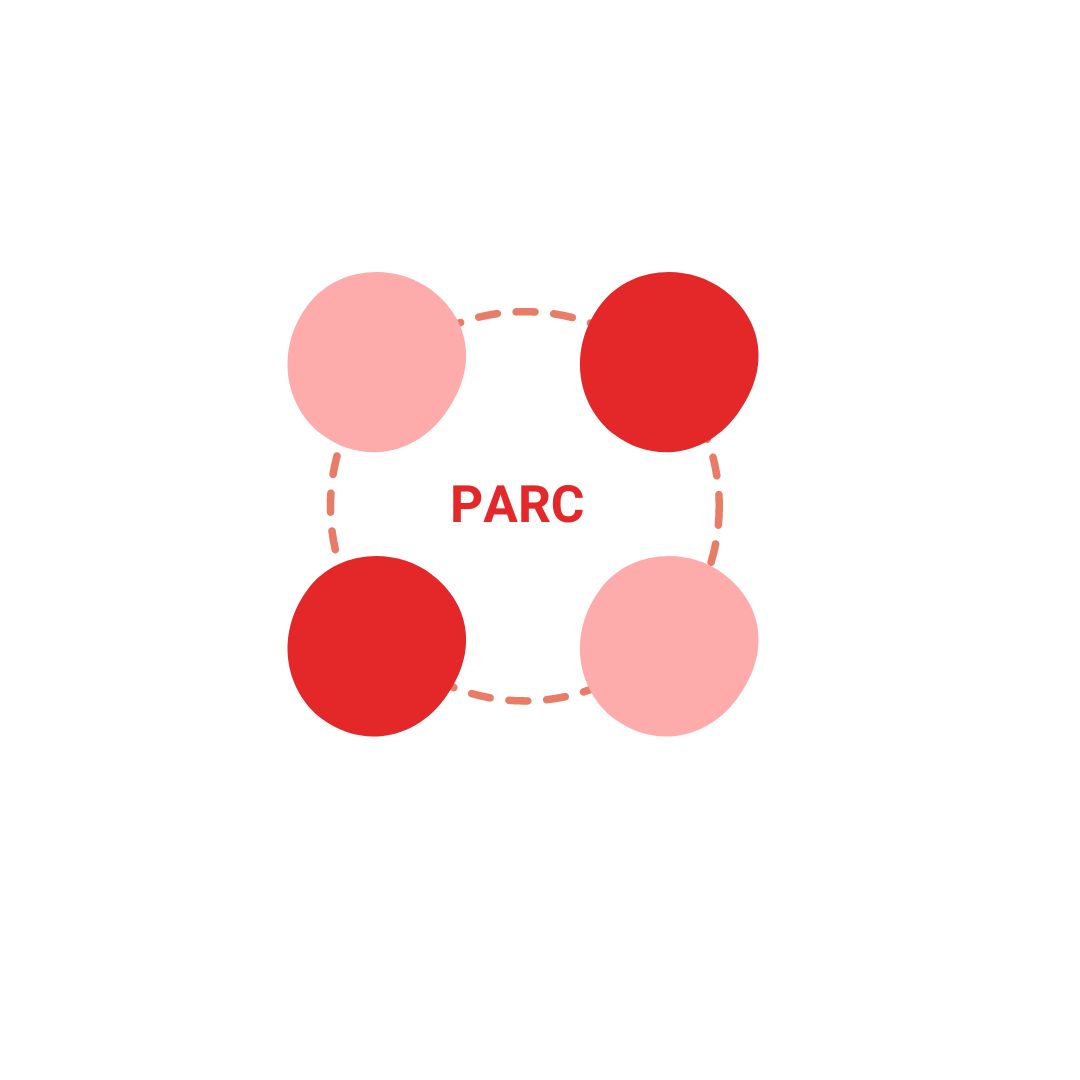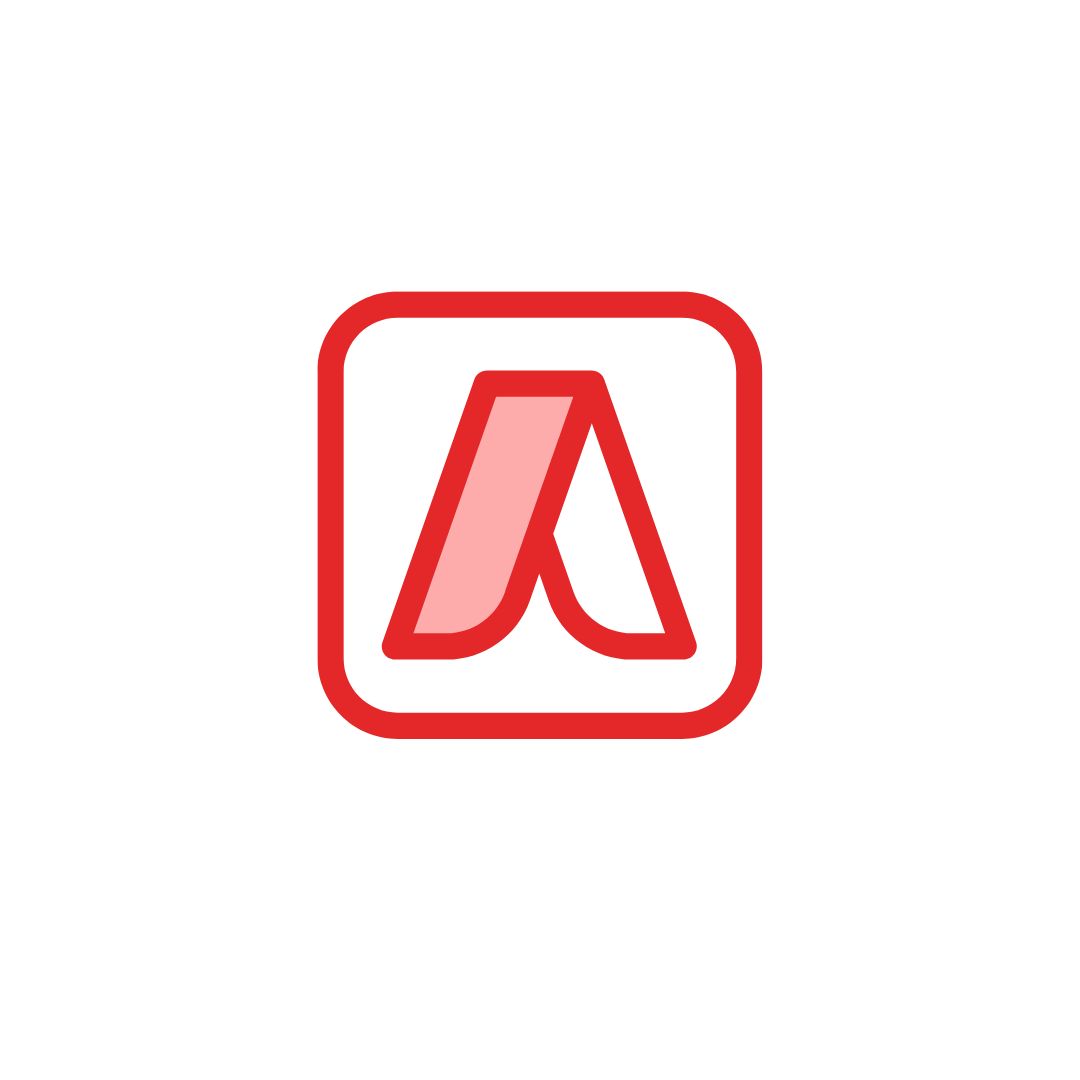Programmatic advertising is changing the face of digital advertising across the globe. Programmatic is evolving and most of the advertisers are adopting programmatic strategies to grow their business as it has better targeting capabilities compared to regular media buying.
Projected Programmatic Ad Spends Worldwide
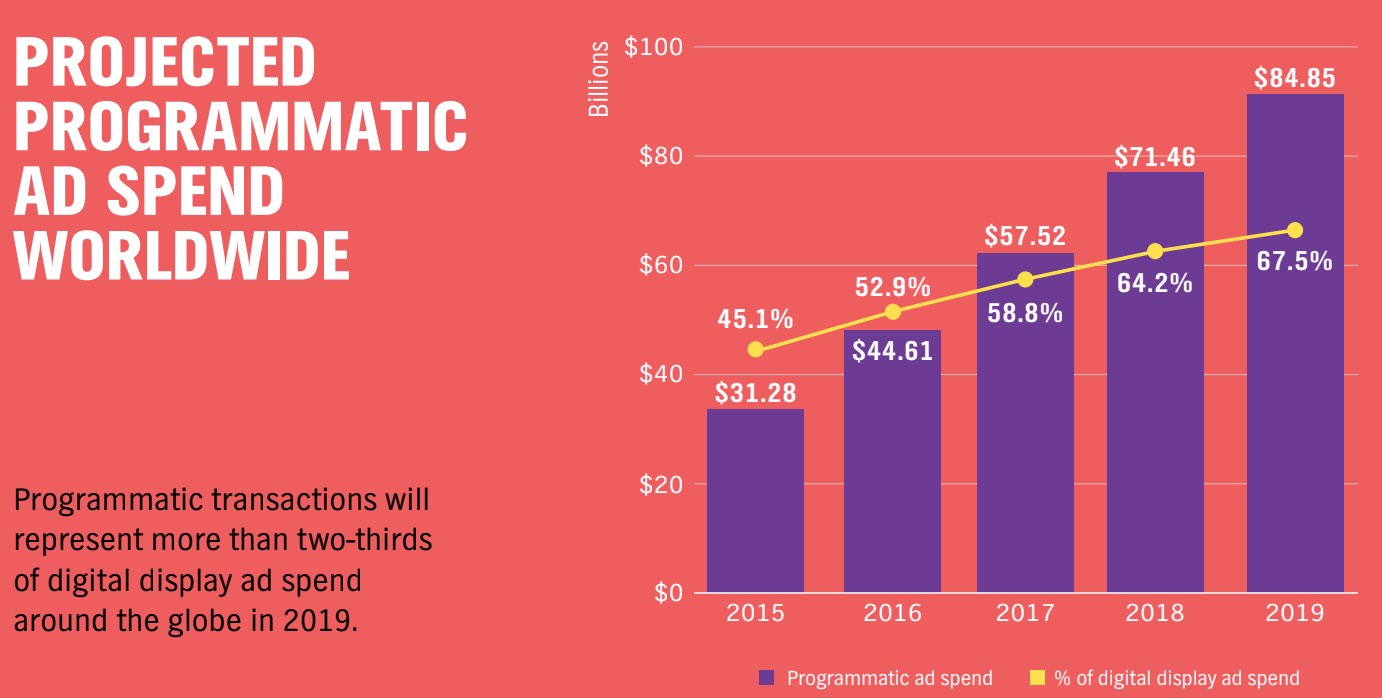
(Source: Zenith)
What is Programmatic Advertising?
Programmatic advertising is the method of buying and selling of digital advertising space through an automated process!
What are the different formats of Programmatic Advertising?
Different formats of programmatic advertising includes:
- Outdoor advertising (electronic display boards)
- Television
- Display
- Video
- Search
Programmatic Advertising Framework
Below screen explains the programmatic advertising framework.
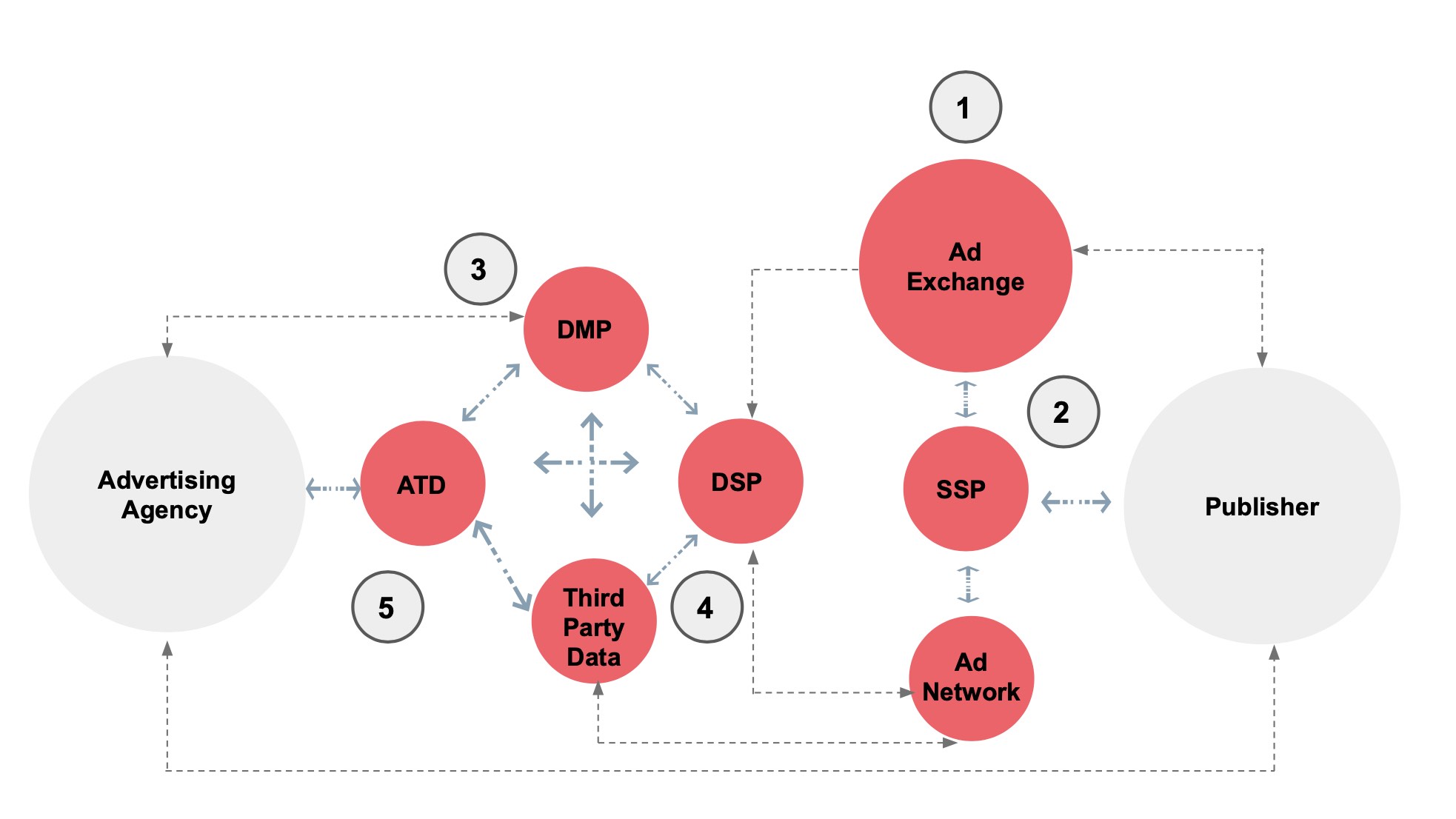
Let’s understand in detail!
Publishers list their inventory on Ad exchange, ad exchange is a marketplace where publishers and buyers come to sell and buy inventory.
Ad exchange examples: Google ad exchange, Microsoft ad exchange etc
SSP commonly known as supply side platform is a media selling platform, from where you can sell inventory in an automated way.
SSP examples: Google, AppNexus, AOL etc
Ad Networks are networks who are connected with multiple publishers, from where advertisers can buy inventory.
AD Network examples: Google Display Network, Komli, Tyroo etc
DSP commonly known as demand side platform, is a media buying platform, from where you can buy inventory in an automated way.
DSP examples: Google, MediaMath, Turn etc
DMP commonly known as data management platform is a platform which captures data, this data is then used by DSP’s to target audiences with different segments. Most of the DSP’s have DMP’s which helps them to drive more value from programmatic media buying process.
Third party data is a collection of different kinds of data including demographic, interests and behaviour. Third party data is commonly used in programmatic media buying.
ATD, also known as agency trading desk is a platform within the agency to buy bulk media from different publishers. They reduce the traditional way of buying media and automates the process.
Programmatic Bidding Framework
Below is how the programmatic bidding framework works
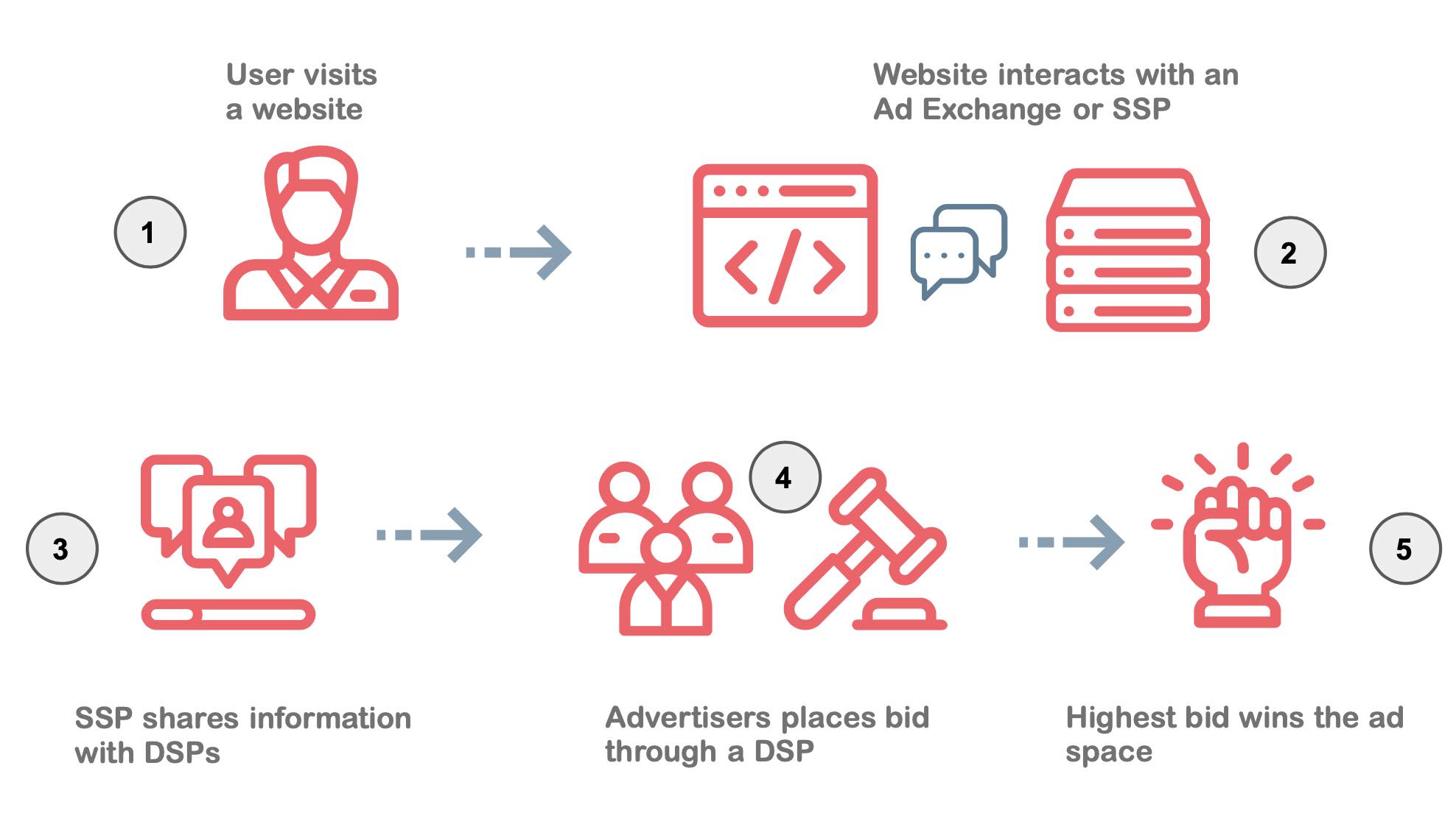
The user visits a website, the website then communicates with an ad exchange or SSP. A request is sent from SSP to DSP, advertisers places a bid through DSP to buy an inventory, the highest bid wins the auction and the ad is served on the website.
Different Types of Programmatic Deals
Open Auction:
In open auction deal, all buyers have access to inventory and can place bids on any inventory available on ad exchange which is open.
Preferred Deals:
In preferred deals, inventory is directly bought from the publisher through programmatic. It’s a pre-auction deal with one buyer in fixed price from a selected publisher.
Guaranteed Deals:
In guaranteed deals, advertiser commits to buy specific volume of inventory from a selected publisher. It’s a pre-auction deal from selected buyers at a negotiated or a fixed price.
Private Auction:
In private auction, selected buyers are allowed with a set floor price.
Different Types of Data in Programmatic Advertising?
There are 3 types of data in programmatic advertising:
- 1st Party Data
- 2nd Party Data
- 3rd Party Data
What is 1st Party Data?
1st party data is the data collected from source which includes
- Data of actions or interactions or behaviour of the audiences on your website
- Data which in in your CRM
- List data
- Subscription data
- Social Data
1st party data is the most valuable data because it comes directly from the source of your website or CRM or social channels. This data can also be collected using a data management platform and create segments to personalise communication to the audience.
What is 2nd Party Data?
2nd party data is the data purchased from a vendor or a publisher directly. This difference between 1st party and 2nd party data is, the 2nd party data is purchased from another source, whereas, 1st party data is the data from your source.
What is 3rd Party Data?
3rd party data is the data purchased from data aggregators. These aggregators purchase data from publishers and from the source, where the data was generated.
Targeting Parameters in Programmatic Display Advertising?
There are different targeting parameters in programmatic display advertising, let’s understand in detail:
Demographics :
Demographics targeting includes targeting by age, gender and location. You can also target users basis hyper local targeting
Placements:
Placement targeting includes, you can target audiences by websites, mobile applications, specific sections within website/app
Technology:
You can target users basis device type, specific devices, browser types and specific operators through programmatic
Behavioural:
Behavioural targeting is one of the key aspects of programmatic advertising, which makes programmatic different from traditional display ads. Behavioural targeting includes targeting users basis their behaviour on the web, learning from their interests, browsing patterns, content consumption patterns and then targeting them.
Also, when you understand the behavioral patterns of users on your website, you can create custom lists, which then can be used for crafting personalise messages to users with dynamic creatives through the marketing journey.
Data Targeting:
Data targeting is another aspect which makes programmatic more valuable than regular display advertising. You can leverage second party and third party data to create more intent based and relevant messages across the user journey.
Benefits of Programmatic Advertising
Programmatic advertising has multiple benefits over traditional advertising, let’s understand each one of them:
Automated Media Buying
Programmatic advertising automates the entire process of media buying. You don’t have to talk to multiple publishers while buying inventory, it cuts down the offline process of sharing insertion orders and approvals to buy inventory, which saves time and effort at both ends including advertiser and publisher.
Effective Targeting
Programmatic advertising allows precise targeting basis users behaviour, custom lists and content consumption patterns. This makes the ads more relevant to the users, leading to higher click-through rates.
High Inventory Quality
The quality of inventory bought through programmatic is high, as you have options to choose from preferred deals and private auctions. So your ads are shown on high quality inventory options, helping you to gain maximum traction for the media investments.
Cost Effective
As your are buying inventory through various deals available in programmatic with multiple publishers, the media bought is cost effective. This helps you to plan your budgets effectively across product categories and geographies.
Personalise Communication
Through programmatic you can create custom lists and create segments for visitors visiting your website, these data points can be captured through DMP’s and can be used to craft personalise messages across the user journey.
Sequential Messaging
With the help of programmatic ads, you can craft sequential messaging campaigns. Sequential messaging campaigns are messages with a sequence telling a story to a specific user, it helps to improve brand consideration during their purchase journey.
To know more about sequential messaging, refer article – Sequential Messaging: Storytelling on Digital Marketing
Rich Media Creatives
Programmatic allows rich media creatives which makes the makes the ad units impactful, drives attention and improves the overall experience. You can add a video within a banner, add multiple products within an ad unit, add search functionality within a banner and much more.
Dynamic Creatives Optimization (DCO)
Programmatic helps to to show dynamic creatives basis data intelligence. Dynamic creatives can be shown for real time or live streaming data, countdown ads, dynamic product ads, weather integrations and custom ads, basis users interactions, which improves performance of your ad campaigns.
To more about DCO, refer article – Guide To Dynamic Creative Optimization (DCO)
Higher ROI
Programmatic ads drive higher ROI as they user behavioural targeting and leverage second party & third party data for targeting users, which makes the ads more relevant leading to higher ROI
Conclusion:
Programmatic advertising is very effective as it does behaviour targeting and adds personalisation, scale and dynamic elements to the user journey, leading to higher ROI. While buying programmatic media, one should study personas for the brand and then define an effective programmatic strategy!


